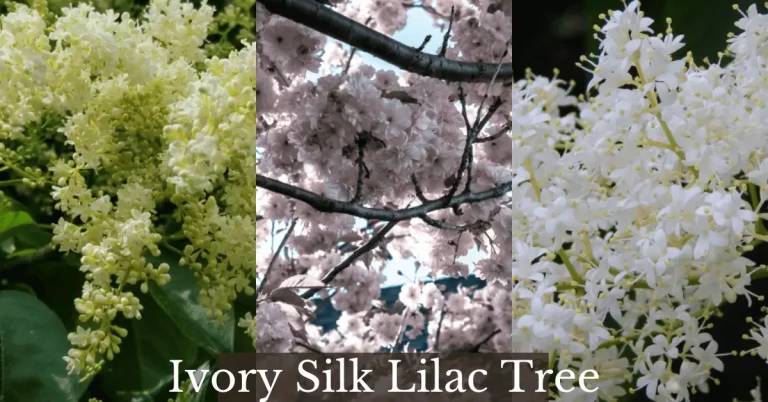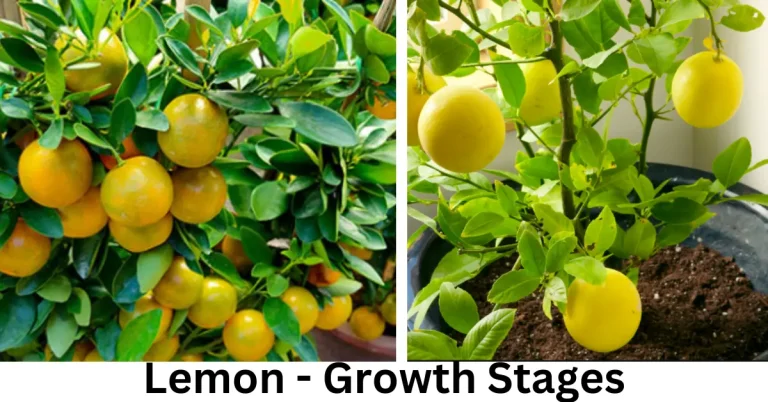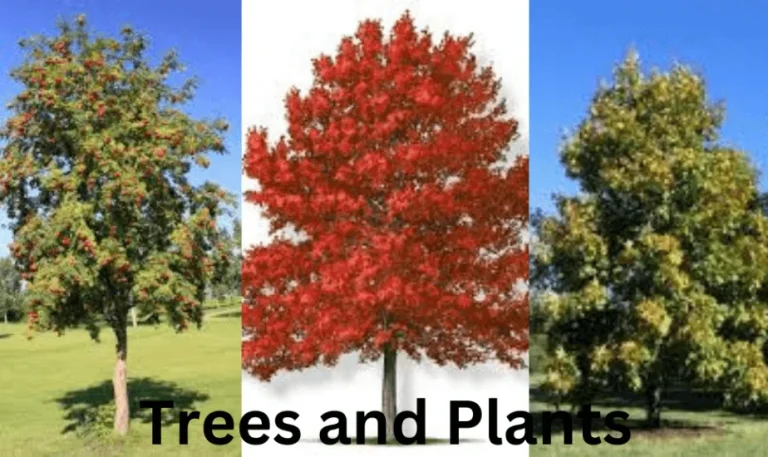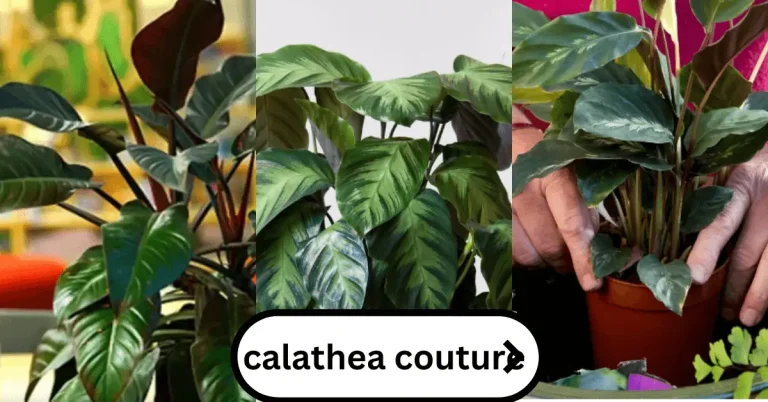Hickory Trees: Their Types, Identification, and Unique Facts
What Is a Hickory Tree?
Hickory tree belongs to walnut family (Juglandaceae family) and genus Carya. Different types of Hickory Trees are flourishing across North America and parts of Asia. They are tall, massive flowering, slow growing, deciduous trees those exhibit floral diversity.
They bore egg-shaped nuts on serrated leaves. Interestingly, these nuts are good in taste (except a few). They may grow tall up to 80 – 100 feet. They love to grow near water bodies in the moist habitat. It’s not uncommon for these trees to grace our landscape for hundreds of years.
Their wood is dense and compact that makes them perfect for construction industry. They may take 15 years to attain a height of 80 feet or so. At this stage, they are in the best form to be used as logs in buildings and bridges.
What Does a Hickory Tree Look Like?
Hickory trees have a tall, grand presence, with distinctive, peeling bark and compound leaves with multiple leaflets. In spring, they produce small flowers, followed by hard-shelled nuts enclosed in green husks in the fall.
How Fast Does a Hickory Tree Grow?
Hickory trees are not fast growing tree. They exhibit slow to moderate growth rates, often maturing fully over several decades. However, their longevity compensates for this, as many hickory trees live for hundreds of years.
How Big Does a Hickory Tree Get?
As the species is divers, so does the height of the tree. The normal height of the tree is about 80 to 100 feet (25-35 m).
Where Can You Plant Your Hickory Tree?
Hickory trees are versatile and can be planted in a variety of settings, from home gardens to larger landscapes. They love well-drained soil and ample sunlight.
What’s Unique about the Hickory Trees?
The tree has economic and ecological significance. These trees not only contribute to our landscape’s beauty but also play a crucial role in sustaining wildlife, providing food (nuts) and habitat (shade). Their strong, durable wood serves various purposes, from construction to making tool handles, sporting goods, and more.
What are the Facts about Hickory Tree?
Following are the interesting facts about Hickory tree.
- Hickory Tree Bark – The bark of a hickory tree exhibits unique features. It is rough and can peel away in long vertical strips, providing a unique texture.
- Hickory Tree Leaves – Moreover, hickory trees are deciduous, their foliage transforming into different colors in fall, from dazzling yellows to vibrant oranges. Their leaves, typically composed of 5 – 17 leaflets, hold vital clues. The shape and size of these leaflets, their margins, and their apex can help in distinguishing between the different species. Some hickory leaves bear tiny hairs and scales (serrated), while others are smooth.
- Hickory Tree Flowers – Hickory bore monoecious flowers. Female flowers are tiny and occur at the tips of branches, while male flowers, typically arranged in catkins, dangle from the previous year’s growth.
- Hickory Tree Nuts – The hickory tree’s fruit, essentially a hard-shelled nut enclosed in a green husk, can be a decisive identification element. It varies across species, from the thin-shelled nuts of the shellbark hickory (Carya laciniosa) to the bitter nuts of bitternut hickory (Carya cordiformis).
How to Identify Hickory Tree?
Among the many species dotting our landscapes, the hickory tree stands out with its distinctive features. In this guide, we’ll delve deep into the precise art of identifying hickory trees.
- Identification by Bark – The bark of hickory trees serves as a major identification clue. It usually exhibits a rich grey color, often peeling in vertical strips. The degree of peeling and texture vary among species.
- Identification by leaves – The leaves of hickory trees are quite distinctive. They’re typically compound with five to seventeen leaflets arranged along a central stem. These leaves turn a golden hue, orange to grey in the fall, before shedding, adding a colorful charm to the landscape.
- Identification by leaflet – The shape of the leaflets varies among different hickory species. While some hickory trees have leaflets that are lanceolate (long and narrow), others have elliptical leaflets. Hickory leaflets often have serrated or smooth edges.
- This characteristic, known as the leaf margin, provides another identification marker. For instance, pignut hickory (Carya glabra) leaflets have finely serrated margins, while shellbark hickory (Carya laciniosa) leaflets have somewhat coarser serrations.
- The tips of hickory leaflets, or their apices, are usually pointed. Some have a sharp tip, while others might have a more rounded apex.
- Identification by Hair and Scales – Some hickory leaves bear tiny hairs and scales, while others are smooth. Shagbark hickory (Carya ovata), for example, has leaflets that are smooth on the upper surface but bear scales underneath.
- Identification by Flowers – Hickory trees produce male and female flowers on the same tree (monoecious). The male flowers, or catkins, hang in long clusters, while female flowers are smaller and appear at the branch tips. The female flowers of hickory trees are small and often go unnoticed due to their size. The male flowers of hickory trees, arranged in hanging catkins, are more noticeable. They appear before the leaves in spring and are usually yellow-green in color.
- Identification by Fruits – Hickory trees bear fruit in the form of hard-shelled nuts enclosed in a green husk. The size, shape, and taste of these nuts vary across species, providing another key identification tool.
- Identification by Branches and Tree Habit – Some hickory tree have a tall, straight trunk with an oval canopy, while others might exhibit a more spreading habit.
What are the Types of Hickory Trees?
Here, we will try to explore 13 different types of Hickory Trees. We have listed all these types, with their images, and short descriptions to make you aware of their features.
- Sand Hickory – Carya pallida
The Sand Hickory is smaller species, with a distinctive light grey or pale bark and slender, yellowish twigs. Its ability to thrive in dry, sandy soil makes it a robust and resilient species.
This shady tree is common in North Carolina and Ontario. Wood is mostly use for making handles of different tools.

- Water Hickory – Carya aquatica
This Swamp Survivor is native to the southeastern United States. Its ability to flourish in floodplain forests and swamps testifies to its adaptability.
As it grows near water bodies and in swampy areas, its foliage is dense and massive. They have slow growth rate.

- Shellbark Hickory – Carya laciniosa
This Swamp Survivor is native to the southeastern United States. Its ability to flourish in floodplain forests and swamps testifies to its adaptability.
As it grows near water bodies and in swampy areas, its foliage is dense and massive. They have slow growth rate.

- Vietnam Hickory – Carya tonkinensis
The Vietnam Hickory, Carya tonkinensis, is a valuable timber tree in its native habitat. Its cultural and economic significance is a symbol of the rich biodiversity of Asia. Among the types of Hickory Trees, this is the only member that is not native to the United States.
It grows 80 feet tall with grey bark. Grey bark and bright orange leaves help in identification. Its nuts are edible and can be used to extract oil. Moreover, it can be used to brew tea.

- Scrub Hickory – Carya floridana
As the scientific name shows, this member is endemic to Florida, and is adapted to fire-prone habitats. Its existence offers a remarkable peek into the adaptive capabilities of plant species.
It can thrive heat and high temperature. It bore sweet nuts, edible and lovable.

- Shagbark Hickory – Carya ovata
This member (Carya ovata – The Showstopper) of walnut family is named “Shagbark” as its bark extends downwards at maturity. It takes more than 40 years to grow tall (up to 100 feet or more) and bore nuts. These nuts are edible and used as snacks.
Shagbark sprout 5-7 leaflets and is an important member of flora of New York, Kansas, Philadelphia and Missouri. As they grow for years and even can have age of 350 years, their wood is the strongest and hardest among the Hickory Family. Their wood is most suitable for making sports good, ladders and handles of tools.

- Pignut Hickory – Carya glabra
The Pignut Hickory is a preferred choice among fauna due to its elegant colourful foliage. While its nuts may not be a human favorite, they’re adored by squirrels, chipmunks, and other woodland creatures.
It got its name – pignut as the nuts attractive for pigs and other wild animals. Wood is used for sports goods and tools. This tree is common in Florida, Georgia, Alabama, and Mississippi.

- Red Hickory – Carya ovalis
It is also easy identify due to its red colour. A subspecies of the Pignut Hickory, the Red Hickory is recognized by its reddish-brown wood. It’s a testament to the beauty that lies beneath the surface.
It is a hybrid of Shagbark and Pignut, that’s why its nuts are not tastiest. The crown of the tree is good, pointed to the sky. You can see these Red Hickory in the surroundings of Texas, Florida and Maine.
Tool and firewood are the most common uses of Red Hickory wood.

- Nutmeg Hickory – Carya myristicformis
The Nutmeg Hickory is the rarest member, is named for its nuts that resemble the popular spice, nutmeg. This spice bearer species adds a flavorful touch to the Hickory family.
The nuts are edible and liked by all. It is common in North Carolina and Arkansas and other habitat with moist conditions.

- Mockernut Hickory – Carya tomentosa
The Hardy species is native to the United States, the Mockernut Hickory is identifiable by its hard, grooved bark and large, flavorful nuts. It has big foliage and big brown twigs.
They usually grow up to 80 – 100 feet in height. It loves the dry soils of Michigan, Illinois, and Ontario. This hardy plant provides raw materials for fuel wood and furniture.

- Chinese Hickory – Carya cathayensis
Carya cathayensis, or the Chinese Hickory, is renowned for its richly flavored nuts, orange leaves, and contributing significantly to local economies and cuisines.
Among all other types of Hickory Trees, the bark of this tree is smooth and the height of the tree is also too short (60 feet only). It is useful as a source of biofuel.

- Bitternut Hickory – Carya cordiformis
Known as the fastest-growing, swampy Hickory, the Bitternut Hickory is notable for its bitter, inedible nuts. Never ever try these nuts.
It bore small buds and leaf with 7-9 leaflets. They produce shade and are an adorable part of aesthetic values. They are used as a raw material for paper and furniture industry.

- Black Hickory – Carya texana
The Black Hickory’s high tolerance for drought and nutrient-poor soil makes it a testament to resilience. It got its name from the dark, black, and rough bark. Its height is moderate, up to 80 feet only.
Its dark, furrowed bark and sweet, edible nuts are notable features. Bark and leaves of dark colour make it easy to identify. Have you ever tried its nuts? You should!!
Area with acidic soils like in Texas, Missouri, and Louisiana are the most lovable habitat of this group. They are used as fire wood.

Conclusion
Hickory trees, proud members of the walnut family, grace the landscapes of North America and parts of Asia. These majestic, slow-growing giants belong to the genus Carya and are known for their impressive floral diversity. Sporting serrated leaves and egg-shaped nuts, hickory trees stand tall at 80-100 feet, often living for centuries, adding elegance to their surroundings. These trees take around 15 years to reach the perfect height for becoming sturdy logs used in buildings and bridges. But it’s not just about their wood; hickory trees play a vital role in the ecosystem. Sustaining wildlife by providing food and shade, their nuts are a delicious treat for many creatures, although some species have a bitter taste.
FAQs
I’m Dr Qaiser Maqsood (PhD), a dedicated researcher and expert in Biological Sciences, Gardening, Bio-Diversity, Ecology, and Environmental Sciences. I’m much concerned about Environmental Pollution, Climate Change, Plantation, Gardening, and Global Warming. My passion is to explore innovative solutions in all these fields.
Be aware that we have ONLY ONE EARTH. Protect it!!






